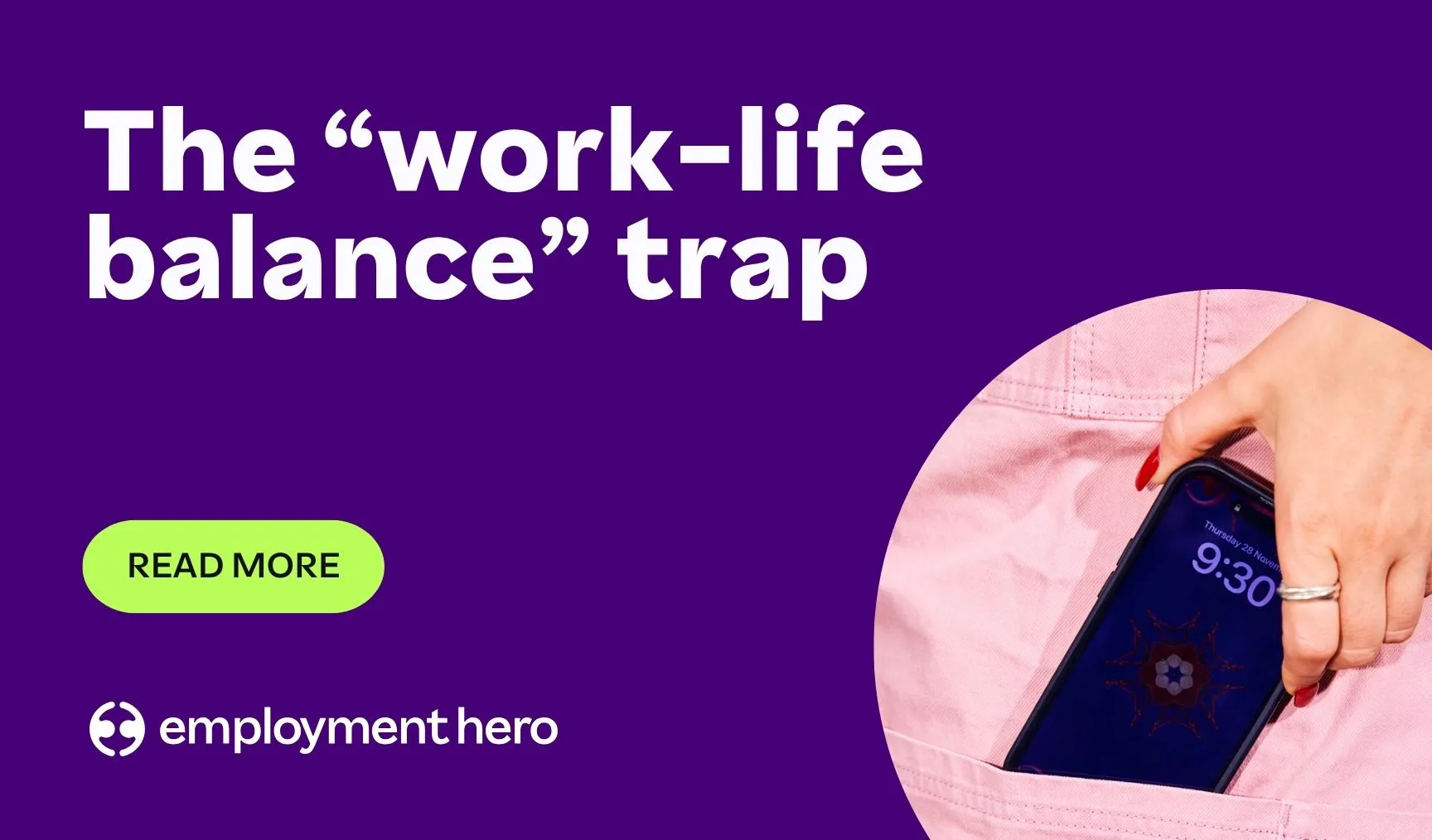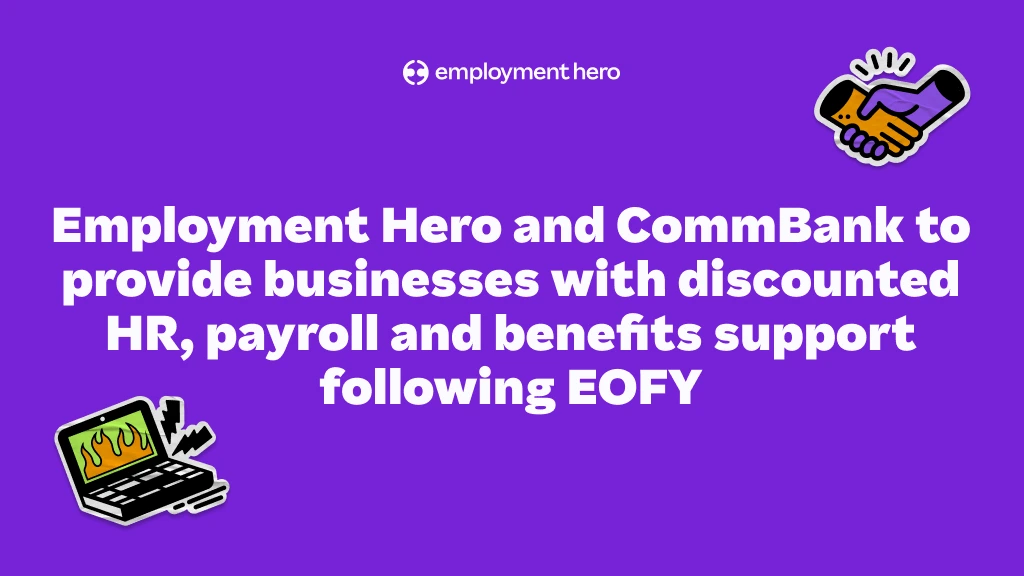8 metaverse business opportunities to take advantage of
It’s time to start thinking about the metaverse, how you might use it, and join the virtual work movement.

It’s the latest buzzword and next big thing that’s been rolling off everyone’s tongues — the metaverse. A concept beloved by tech enthusiasts, it has since been propelled into greater mainstream focus ever since Facebook unveiled its new branding as Meta.
Despite the hype, the concept of the metaverse is still relatively abstract. Will it actually become part of our daily lives? How will it affect the way we socialise and work?
It’s time to start thinking about the metaverse, how we might use it and what business opportunities it might hold.
What is the metaverse?
The term “metaverse” was first coined by Author Neal Stephenson in his 1992 science-fiction novel, Snow Crash. In his novel, he envisions a virtual reality-based world where people use digital avatars of themselves to explore, as a way of escaping a dystopian reality. In fact, some of the elements he mentioned and predicted in his novel exist today — from virtual reality headsets to encrypted electronic currencies!
A combination of the prefix ‘meta’ — meaning beyond, and ’universe’, metaverse refers to shared, immersive virtual worlds where people can live, work, play, transact, and socialise, facilitated by the use of virtual reality and augmented reality. It’s the next evolution of the internet, and blurs the line between the digital and physical world.
As an emerging technology, experts differ in how to define it and there is no singular, all-encompassing definition — but Accenture’s Technology Vision Report 2022 perceives it most accurately as an evolving and expanding continuum with multiple dimensions, consisting of three main aspects:
- Multiple technologies including extended reality, blockchain, artificial intelligence, digital twins, smart objects (including cars and factories), and edge computing
- Encompasses the ‘virt-real’ — a range of experiences from purely virtual to a blend of virtual and physical
- Spectrum of emerging consumer experiences and the business applications and models across the enterprise that will be reimagined and transformed

What types of metaverse platforms are there?
Broadly speaking, there are two main types of metaverse platforms — the first is a blockchain-based metaverse that uses NFTs and cryptocurrencies, such as Decentraland and The Sandbox. They allow people to purchase virtual real estate, build their own environments, accrue digital assets, and more.
The second type is a general virtual world for business or recreational purposes, much like the one Facebook is striving to create. Gaming platforms such as Roblox, Fortnite and Minecraft fall under this category, as they are ‘places’ where users can take part in virtual events and concerts.
How can the metaverse help businesses?
We are currently in the early days of the metaverse, but there is tremendous opportunity up for grabs — businesses can transform everything from how they interact with customers, products and services offered, production and distribution processes, organisational operations, and more.
According to Accenture’s Tech Vision 2022 Report, 71% of global executives see the metaverse as having a positive business impact on their organisations, with 42% believing that it will be “breakthrough” or “transformational”. That’s echoed by JP Morgan, with their findings showing that the metaverse will infiltrate every sector in the coming years, culminating in market opportunities worth more than $1 trillion in annual revenues.
It’s all about how the metaverse can work for your business and spur your organisation to explore new modes of digital transformation — but lots of groundwork needs to be done in the meantime, to build new platforms, technology and partnerships. Tech titans and gaming giants such as Meta, Microsoft, Roblox and Epic Games have all jumped on the bandwagon to create their own metaverses — it’s up to other business leaders to decide their path forward.
To navigate these opportunities, businesses can benefit from understanding the latest trends and statistics in remote working. According to recent remote working statistics, there is a growing trend towards remote work, which complements the rise of virtual environments like the metaverse.
Now’s the time to shape up the next decade of business, build new worlds and explore new markets that the metaverse creates — here are 8 new opportunities in the virtual world to explore.
Business opportunities in the upcoming virtual space
1. Virtual concerts

The metaverse is well on its way to dominating a huge chunk of how people spend their time online. It has replaced and transformed real-life experiences such as live events and concerts — with big names such as Marshmello, Ariana Grande, Justin Bieber, Lil Nas X, and Galantis performing on virtual platforms like Wave, Fortnite, and Roblox.
Most recently, Travis Scott’s metaverse concert garnered a whopping 27.7 million unique players in-game, creating an astronomical, immersive experience. Imagine attending a concert without having to leave the comfort of your home! That’s the future of live music that’s here to stay.
2. Immersive entertainment
Entertainment in the metaverse is garnering immense interest, especially from younger consumers who have grown up with interactive technology, and are driving metaverse growth. Take the gaming platform Roblox for example — 67% of users are under the age of 16.
That’s exactly why the world’s largest toy company, The Lego Group, is determined to not fall behind — they’ve recently partnered with Epic Games to build a family-friendly, inspiring and engaging space in the metaverse for kids of all ages to enjoy together.
Disney is also joining in by creating its own theme park metaverse, after receiving approval for a virtual-world simulator patent which would project 3D images and virtual effects on physical spaces. While they are still exploring this developing technology, the aim is to eventually capitalise on the tracking system to personalise projections — so every individual’s experience will be unique and different.
3. Enhanced customer engagement
Metaverse platforms have provided companies with the opportunity to transform how, when and where they interact with their customers, leading to the concept of the ‘digital twin’ — where virtual worlds are created to allow users to design, test and model processes to improve existing conditions.
One great example of this is the Vail Ski Resort in Colorado, which has created a digital twin of the mountain to improve the predictability of ski conditions and snowmaking infrastructure. This has allowed them to provide optimal skiing conditions for guests, meeting the demand for early season skiing and riding even in low-snow years, and subsequently increasing revenue.
Forever 21 has also collaborated with Roblox to redefine retail in the metaverse, where users and influencers can customise their own fashion stores in Forever 21 Shop City. Apart from being able to role play, meet friends, and discover rare items, they’ll also be able to add merchandise from new collections released in the physical and e-commerce stores to their own metaverse store, or buy it for their own Roblox avatar. How cool is that!
A reflection of how consumers increasingly hop between the physical and digital worlds when making a purchase, Forever 21 is transforming the way brands engage their consumers, extend their presence, and release products in creative new ways.
4. Remote working & better collaboration

The Covid-19 pandemic changed the future of work by forcing everyone to trade in physical meetings for online Zoom meetings, but that has ironically accelerated and paved the way for remote working and ‘virtual meetings’. Bill Gates himself has predicted that within the next two or three years, most virtual meetings will move from 2D camera image grids to the metaverse, a 3D space with digital avatars.
Technology is now able to replicate the experience of being together in the office in a virtual space! How crazy is that. With an avatar, VR goggles and motion capture gloves to accurately capture your expressions, body language, and voice, you could be chilling on a beach at sunset in Costa Rica with a cocktail in hand, while attending a virtual meeting.
Microsoft has done just that by launching Mesh for Microsoft Teams, designed to make online meetings more personal, engaging and fun. Organisations can build metaverses within Teams, where users can take their avatars into these spaces to socialise, collaborate on projects and have productive conversations that facilitate innovation.
Facebook has also launched its own version of Horizon workrooms — designed to improve a team’s ability to collaborate, communicate, and connect remotely, through the power of VR.
5. Improved learning and training
The prevalence of remote work makes effective digital training approaches more crucial than ever, and that’s where the metaverse comes in. By providing refreshing, interactive engagement methods via augmented reality (AR) and virtual reality (VR) training, it allows people to learn faster, retain information better, focus on the task, and enjoy the process.
By being immersed in a variety of virtual scenarios, students get to enjoy hands-on training in a remote, risk-free environment — without any safety hazards.
In fact, a study by PWC has shown that employees trained via VR simulations can be trained up to four times faster, and require less time to complete the training compared to e-learners and classroom learners. It’s also shown that VR training provides an affordable way to upskill employees faster with better results!
Organisations such as Accenture have already acquired sixty thousand Oculus Quest 2 headsets for training its new hires, along with Bank of America rolling out VR training to its fifty thousand employees.
6. Branding and marketing opportunities

Brands like Nike, Chipotle, Vans and Hyundai have been quick to ride the wave and join the metaverse world — particularly to engage young consumers who shun traditional forms of media. It’s fun, engaging and interactive, with virtual events lined up for anyone and everyone to access, wherever they are.
Chipotle has also taken it a step further by connecting both the virtual and physical worlds, pledging to donate a share of in-game item sales to a cause that supports young farmers, as well as providing a promo code in-game for a free entree — redeemable through its app and website.
For businesses who are willing to embrace uncertainty and try out something unconventional but creative in their marketing efforts, the metaverse is definitely a platform to explore!
7. Digital real estate
It sounds incredulous, but real estate sales on the ‘Big Four’ metaverse platforms — Sandbox, Decentraland, Cryptovoxels and Somnium — topped $500 million last year, and is expected to double this year. If you’ve got digital currencies to spare, perhaps it’s time to purchase virtual homes as a business or investment opportunity?
Although it has been met with scepticism by older investors — because real land is naturally scarce but virtual land is easily created with code — younger consumers and investors see the appeal in owning something that’s digital and in limited supply.
Each parcel of metaverse land is also wholly unique, secured by a non-fungible token (NFT) which is essentially a deed or proof of ownership. This virtual real estate NFT guarantees your ownership, allows you to resell the property, and also records all the transactions for that property automatically.
The value of a metaverse property ultimately depends on what the owner does with it — there’s a huge opportunity to take it commercial. For companies looking to advertise to a technologically savvy, young digital audience, there’s definitely demand for places that can be rented and used to host events. Property owners can also sell digital billboard space for advertising opportunities.
8. New revenue streams
Selling digital assets in the metaverse could be a huge business opportunity for many companies, and many brands have already started doing it.
The Gucci Garden experience on Roblox saw the sale of exclusive, limited-edition avatar items, and a virtual-only digital Gucci purse even sold for a higher price than its real world counterpart!
Even Ralph Lauren launched its first digital fashion line with Roblox, which helped new digital customer acquisition increase by 58% in the quarter. Luxury brands like Burberry have also joined the party, releasing a non-fungible token (NFT) collection featuring digital vinyl toys known as Blankos that live on a blockchain.
The metaverse presents a whole new revenue stream that businesses can capitalise on — if they are brave enough to take risks!
Augmented Reality (AR) vs Virtual Reality (VR)

While both technologies involve simulated reality, the key difference is that VR replaces reality completely, taking you to a virtual environment. On the other hand, AR adds to reality, projecting information on top of your existing physical environment.
Both AR and VR rely on different components and serve different audiences — in VR, users have to wear a headset and headphones that covers their eyes completely, to replace the real world with a virtual one.
The virtual universe can be coded to encompass anything, from mirroring real environments to creating completely new ones. Although it has been predominantly used for entertainment purposes such as gaming, it also has business applications in product design, training, architecture and retail.
As for augmented reality, it integrates the simulated world with the real environment, often requiring the user to use a smartphone or tablet screen to accomplish this. When the phone or screen camera is aimed at a point of interest, it generates a live-streaming video of that environment on the screen, which is then overlaid with information.
The most popular AR example would be the mobile game Pokemon Go — remember when it went viral with everyone chasing pokemons around the world?
To stay connected with your colleagues in these virtual environments, explore our 15 ways to stay connected virtually with coworkers. This can enhance your remote work culture and help maintain strong team bonds.
Take a step toward the virtual work movement
Are you ready to join us in the metaverse? Remote work is here to stay, and it’s best to hop on board rather than get left behind.
However, it’s important to stay informed about the challenges. Remote work is facing its first challenge on the global stage with digital nomads being forced to return home, which could have far-reaching implications for the future of remote working.
Take the first step towards embracing the future of work by checking out our remote working guide, or hire talent anywhere in the world (whom you can then hold meetings with in the metaverse) with our Global Teams management solution.
Learn more about the incredible business benefits of hiring remote talent around the world by downloading our free guide to Global Teams now.
Related Resources
-
 Read more: The ‘work-life balance’ trap: Why promising it is hurting your SME recruitment (and what to promise instead)
Read more: The ‘work-life balance’ trap: Why promising it is hurting your SME recruitment (and what to promise instead)The ‘work-life balance’ trap: Why promising it is hurting your SME recruitment (and what to promise instead)
For growing SMEs, work-life integration is a sustainable way to support your team and attract top talent. Explore how your…
-
 Read more: Job ad guide: How to attract top candidates
Read more: Job ad guide: How to attract top candidatesJob ad guide: How to attract top candidates
Looking to hire your perfect match? The way you pitch your open role can be the difference between landing or…
-
 Read more: Employment Hero and CommBank to provide businesses with discounted HR, payroll and benefits support following EOFY
Read more: Employment Hero and CommBank to provide businesses with discounted HR, payroll and benefits support following EOFYEmployment Hero and CommBank to provide businesses with discounted HR, payroll and benefits support following EOFY
Eligible CommBank Yello for Business customers will get the first 3 months free on any Employment Operating System subscription with…





















